
Houaphanh Province: The Hidden Gem of Laos
Discover Houaphanh Province, a tranquil paradise in northeastern Laos, boasting lush landscapes, vibrant wildlife, and a rich cultural heritage.
Houaphanh Province, nestled in the northeastern region of Laos, is a serene and beautiful escape from the hustle and bustle of modern life. Known for its lush landscapes, rugged mountains, and rich cultural heritage, this province offers an authentic and immersive experience for any traveler seeking to explore off-the-beaten-path destinations. The scenic beauty of the area is complemented by its friendly locals who welcome visitors with warmth and hospitality. The province is home to the Nam Et-Phou Louey National Protected Area, which provides a haven for wildlife and a fantastic opportunity for eco-tourism. Here, you can embark on night safaris, spot rare species, and enjoy hiking trails that offer breathtaking views. Another must-visit is the Viengxay Cave City, a historical site that served as a hidden refuge during the Vietnam War. The caves tell stories of resilience and survival and offer a unique glimpse into the nation's past. In Houaphanh, you can also explore traditional Lao villages where you can witness age-old crafts and customs. The local markets brim with handmade textiles, pottery, and other crafts that make for perfect souvenirs. Don't miss the chance to savor the local cuisine, which is rich in flavors and uses fresh, locally-sourced ingredients. Whether you're an adventure seeker, history enthusiast, or culture lover, Houaphanh Province has something special to offer.
Local tips in Houaphanh Province
- Pack light, breathable clothing, as the weather can be warm and humid.
- Hire a local guide for the best experience when exploring the Nam Et-Phou Louey National Protected Area.
- Visit Viengxay Cave City with a guide to fully understand its historical significance.
- Try to learn a few basic Lao phrases; it will enhance your interactions with the locals.
- Carry some local currency (Kip) as credit card acceptance can be limited in rural areas.
Houaphanh Province: The Hidden Gem of Laos
Houaphanh Province, nestled in the northeastern region of Laos, is a serene and beautiful escape from the hustle and bustle of modern life. Known for its lush landscapes, rugged mountains, and rich cultural heritage, this province offers an authentic and immersive experience for any traveler seeking to explore off-the-beaten-path destinations. The scenic beauty of the area is complemented by its friendly locals who welcome visitors with warmth and hospitality. The province is home to the Nam Et-Phou Louey National Protected Area, which provides a haven for wildlife and a fantastic opportunity for eco-tourism. Here, you can embark on night safaris, spot rare species, and enjoy hiking trails that offer breathtaking views. Another must-visit is the Viengxay Cave City, a historical site that served as a hidden refuge during the Vietnam War. The caves tell stories of resilience and survival and offer a unique glimpse into the nation's past. In Houaphanh, you can also explore traditional Lao villages where you can witness age-old crafts and customs. The local markets brim with handmade textiles, pottery, and other crafts that make for perfect souvenirs. Don't miss the chance to savor the local cuisine, which is rich in flavors and uses fresh, locally-sourced ingredients. Whether you're an adventure seeker, history enthusiast, or culture lover, Houaphanh Province has something special to offer.
When is the best time to go to Houaphanh Province?
Iconic landmarks you can’t miss
Vieng Xai Caves Visitor Centre
Unveil the history and beauty of the Vieng Xai Caves Visitor Centre, a captivating blend of nature and culture in Laos.
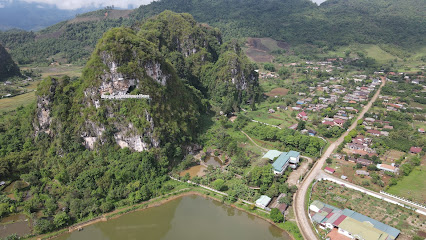
Viengxay caves
Explore the historical and natural beauty of Viengxay Caves, a unique destination in Laos showcasing stunning limestone formations and rich wartime history.

nakhang history, houaphan province
Explore the cultural heritage of Houaphan Province at Nakhang History Museum, a hidden gem revealing the region's fascinating past.
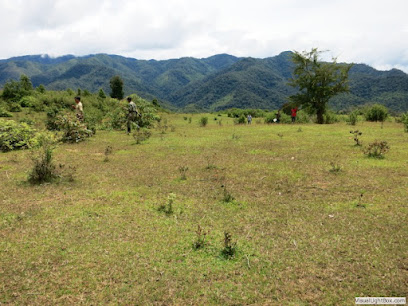
Phou Lao
Explore Phou Lao, a breathtaking mountain peak in Laos, where stunning vistas and nature's tranquility await your adventurous spirit.

Phou Hinhe
Discover the breathtaking heights of Phou Hinhe, a mountain peak in Laos that offers stunning views and immersive nature experiences.

Unmissable attractions to see
Xam Neua City Park
Explore Xam Neua City Park, a tranquil retreat in Sam Nuea, Laos, perfect for relaxation, family outings, and immersing in local culture.

Nam Et - Phou Louey National Park
Explore the breathtaking landscapes and diverse wildlife of Nam Et - Phou Louey National Park, a hidden gem in Laos for nature lovers and adventurers alike.
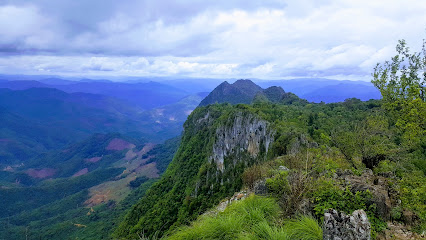
Saleuy Watetfall
Experience the serene beauty of Saleuy Waterfall in Na Khen, Laos - a tranquil retreat for nature lovers and adventure seekers alike.
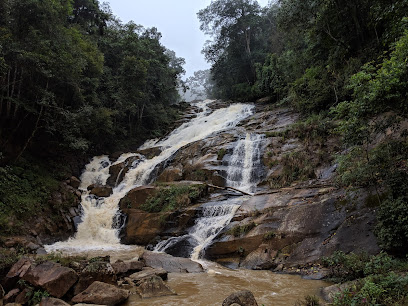
Sam Neua Viewpoint
Experience the breathtaking beauty of Sam Neua Viewpoint, where scenic vistas and tranquil landscapes await every visitor in Laos.
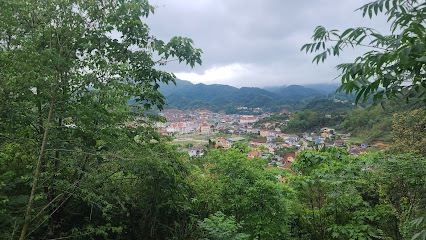
Beautiful Waterfall
Experience the breathtaking beauty of the Beautiful Waterfall in Na Khen, a perfect getaway for nature lovers and adventure seekers.

Cửa khẩu Pahang
Discover the captivating blend of culture and nature at Cửa Khẩu Pahang in Samtay provinces, a unique tourist attraction for all adventurers.
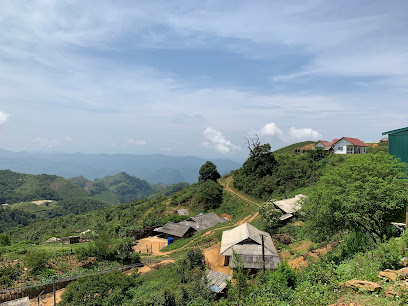
Nam Neua Waterfall
Experience the breathtaking beauty of Nam Neua Waterfall, a hidden gem in Laos perfect for nature lovers and adventurers seeking serenity.
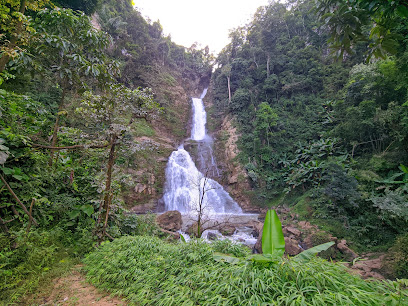
Mountain Viewpoint Xam Neua
Discover breathtaking views and tranquility at Mountain Viewpoint Xam Neua, a hidden gem in the heart of Laos' natural beauty.
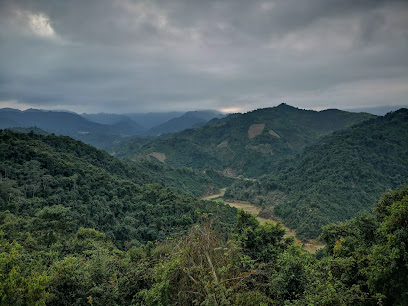
TardKon Waterfall
Explore TardKon Waterfall, a breathtaking natural wonder in Laos, perfect for adventure and relaxation among stunning landscapes.
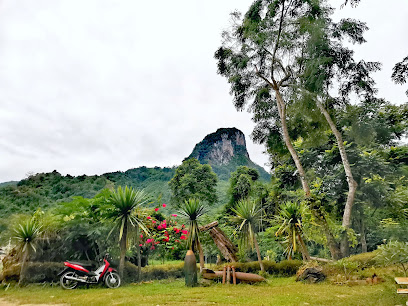
Phoumi Vongvichid Memorial Cave
Discover the Phoumi Vongvichid Memorial Cave in Viang Xai, a unique historical site blending stunning geology with poignant Laotian history.
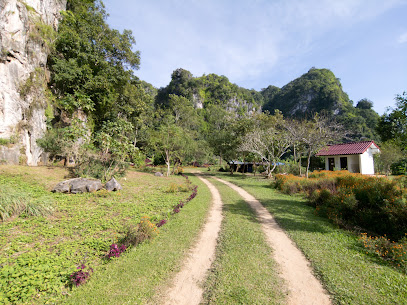
ແຫຼ່ງທ່ອງທ່ຽວທຳມະຊາດນ້ຳຕົກຕາດນຳ້ເຕີບ
Discover the serene beauty and rich culture of Tong Long, a captivating tourist attraction nestled in the heart of Laos.
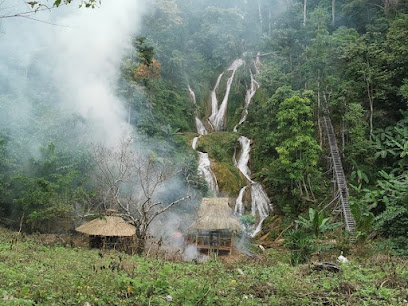
Heroes Sacrifice Monument
Explore the Heroes Sacrifice Monument in Sam Nuea, a poignant tribute to local heroes surrounded by serene landscapes and rich history.

Viengxay caves
Explore the stunning Viengxay Caves in Laos—where natural beauty meets historical significance in a captivating adventure.

Nouhak Phoumsavanh Residence Cave
Explore the historic Nouhak Phoumsavanh Residence Cave in Viang Xai, where nature and history intertwine in a captivating adventure.
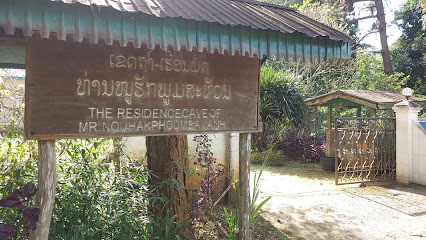
Hart Ngair
Explore the natural beauty and rich culture of Hart Ngair, a hidden gem in Muang Et, Laos, perfect for adventurous travelers and culture enthusiasts alike.
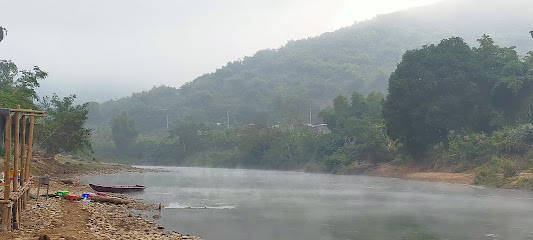
Essential places to dine
Huế Thương Restaurant
Discover authentic Vietnamese flavors at Huế Thương Restaurant in Sam Nuea – where every dish tells a story.
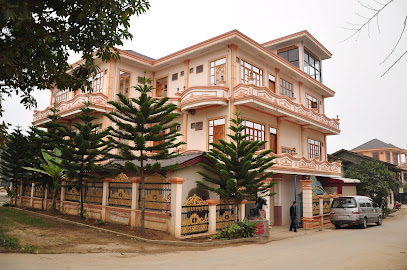
Sabaidee Odisha
Experience the delightful fusion of Indian and Lao cuisine at Sabaidee Odisha in Viang Xai, where every dish tells a story.
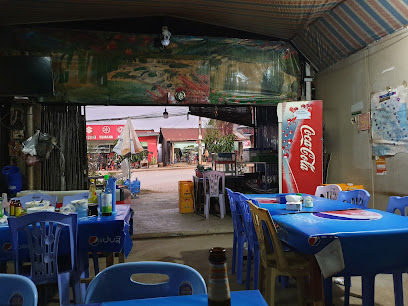
Dan Nao Meuang Xam Restaurant
Discover authentic Laotian cuisine at Dan Nao Meuang Xam Restaurant in Sam Nuea – where every dish tells a story.
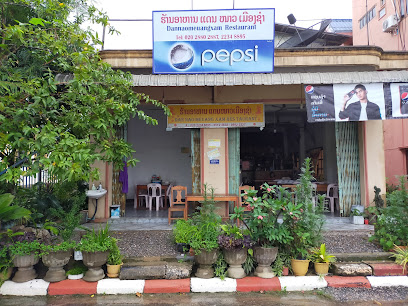
5 Yek Restaurant
Discover the flavors of Laos at 5 Yek Restaurant in Viang Xai – where tradition meets taste in every delicious dish.
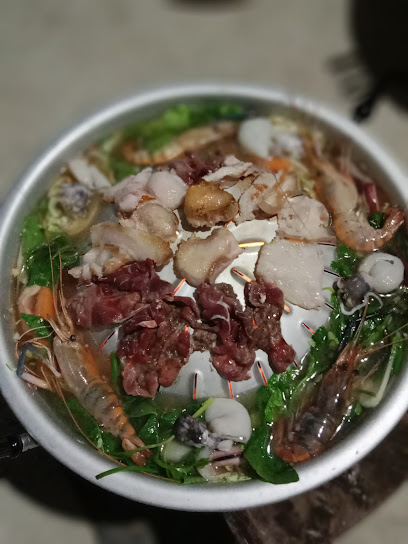
Panaikham Restaurant
Discover authentic Lao flavors at Panaikham Restaurant in Sam Nuea – where traditional recipes meet warm hospitality.
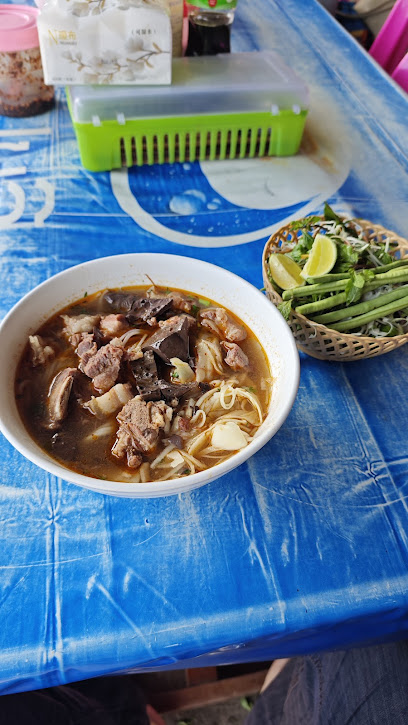
ຮ້ານ ເຟີດອກຄຳ / Dokkham Noodle Soup
Experience authentic Laotian cuisine at Dokkham Noodle Soup in Sam Nuea, where delicious flavors meet warm hospitality.

Samnuea Grill Restaurant
Discover the rich flavors of Laos at Samnuea Grill Restaurant – where tradition meets taste in every dish.
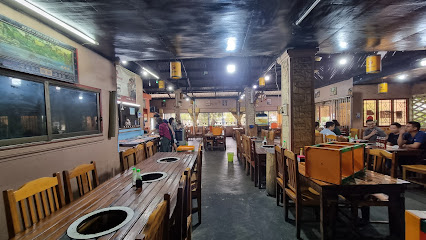
ຮ້ານ ອາຫານ ນ.ນົກ
Experience authentic Lao cuisine at ຮ້ານ ອາຫານ ນ.ນົກ in Sam Nuea - a delightful taste adventure awaits!
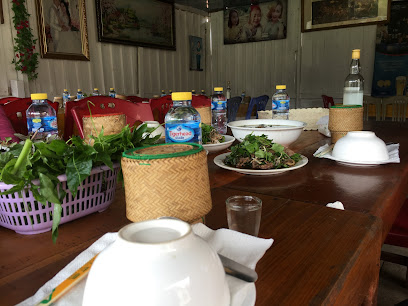
Muangpren karaoke
Experience the vibrant nightlife at Muangpren Karaoke in Muang Peun - where delicious food meets lively entertainment!

Mrs. Phoutphone Noodle Shop
Experience authentic Laotian cuisine at Mrs. Phoutphone Noodle Shop, where every bowl tells a story of tradition and flavor.
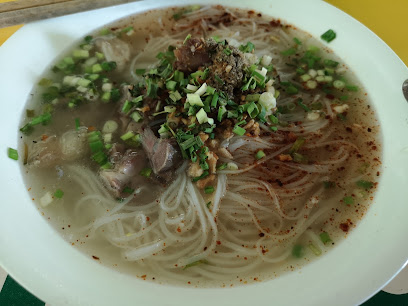
Markets, malls and hidden boutiques
Ock Pop Tok Living Craft Centre
Immerse yourself in the beauty of Lao craftsmanship at Ock Pop Tok Living Craft Centre, where art and culture come to life.
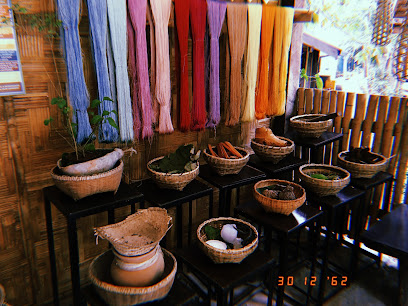
Yuni Coffee Co. Café
Experience the best of local coffee culture at Yuni Coffee Co. Café in Sam Nuea, where every cup tells a story.
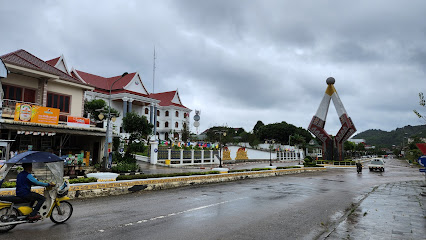
The Boutique by Ock Pop Tok
Explore The Boutique by Ock Pop Tok in Luang Prabang for exquisite handmade textiles and authentic Laotian craftsmanship that tells a story.
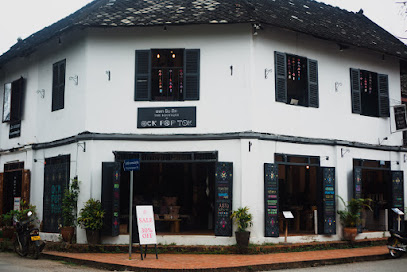
Pathana Boupha Antique House
Explore Pathana Boupha Antique House, a treasure trove of Laos' rich heritage through exquisite antiques and crafts in the heart of Luang Prabang.
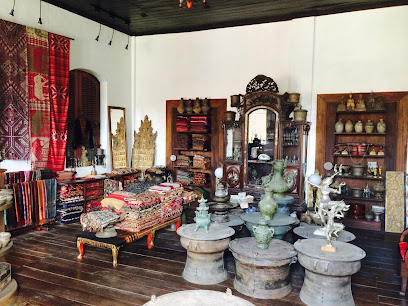
Doanh Nghiep Trung Lâm
Explore the authentic essence of Laos at Doanh Nghiep Trung Lâm, where local craftsmanship meets a delightful shopping experience.
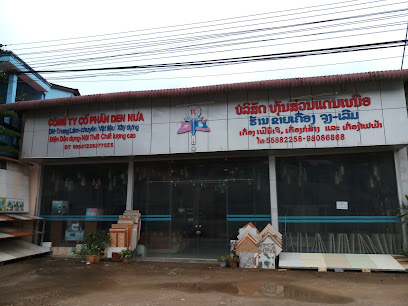
ຮ້ານລີຢາງ
Explore the local grocery store experience at ຮ້ານລີຢາງ, where authentic Laotian flavors meet warm hospitality.
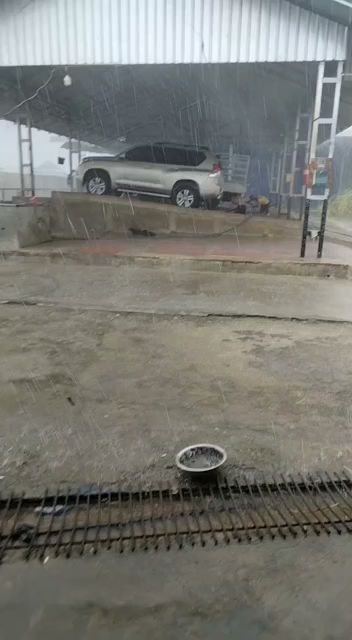
ຕະຫລາດກະສິກຳ ບ້ານ ນາສະກາງ
Explore the vibrant flavors of Laotian culture at ຕະຫລາດກະສິກຳ ບ້ານ ນາສະກາງ, a bustling grocery store in Sam Nuea.
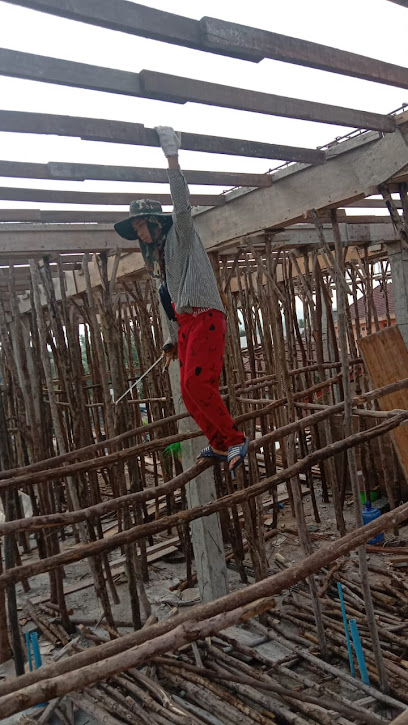
420 Smile online Shop - please contact us. free delivery
Explore the vibrant world of Asian groceries at 420 Smile, your one-stop shop for authentic ingredients and free delivery.
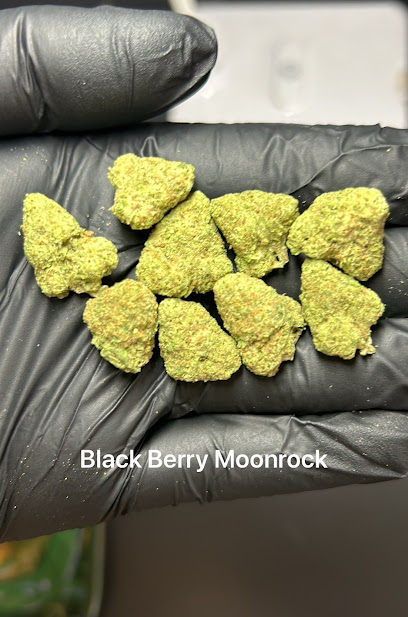
ຮ້ານກັອບປີເອກະສານ ແລະ ພິມບັດເຊີນ
Discover the vibrant essence of local culture at ຮ້ານກັອບປີເອກະສານ ແລະ ພິມບັດເຊີນ in Sam Nuea, where fresh ingredients and local delights await.
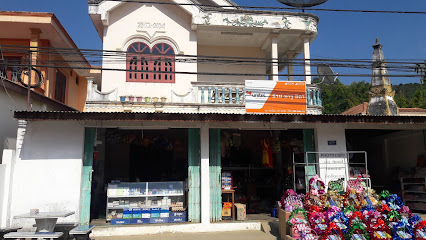
TN Mart
Discover the vibrant local culture and unique products at TN Mart in Sam Nuea, a must-visit store for every tourist.

Phansheng Market ຕະຫຼາດພັນເຊີງ 潘胜市场
Explore the vibrant Phansheng Market in Sam Nuea, where shopping, local cuisine, and authentic culture come together in a delightful experience.

ບ້ານດອນໜູນ
Discover the flavors of Laos at ບ້ານດອນໜູນ Bakery, where freshly baked goods meet local culinary traditions.

ຮ້ານວັນທາການພິມ
Discover authentic Lao fashion and textiles at ຮ້ານວັນທາການພິມ in Sam Nuea, a must-visit for every traveler seeking unique cultural souvenirs.
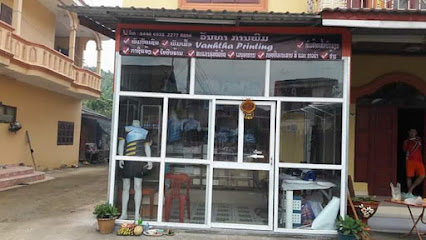
Protected Areas Handicraft Shop
Explore the Protected Areas Handicraft Shop for unique souvenirs that represent the rich culture and artistry of Ban That Hium.

ບ້ານດອນ
Explore the enchanting ບ້ານດອນ store in Muong Yong, where local craftsmanship meets vibrant culture for an unforgettable shopping experience.
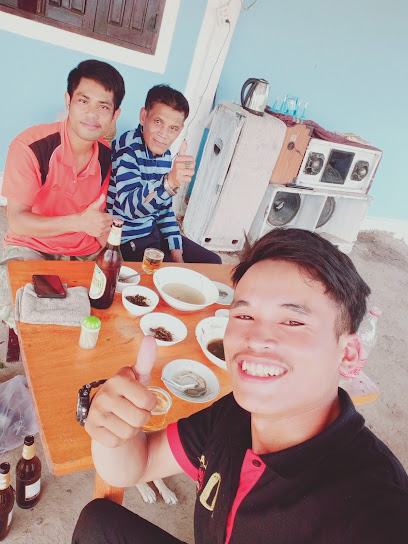
Essential bars & hidden hideouts
Huế Thương Restaurant
Discover the authentic flavors of Vietnam at Huế Thương Restaurant in Sam Nuea, a culinary gem offering traditional Huế dishes in a vibrant setting.
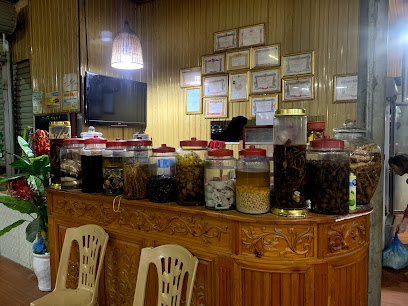
Dan Nao Meuang Xam Restaurant
Discover the authentic flavors of Laos at Dan Nao Meuang Xam Restaurant in Sam Nuea, where traditional dishes and warm hospitality await.
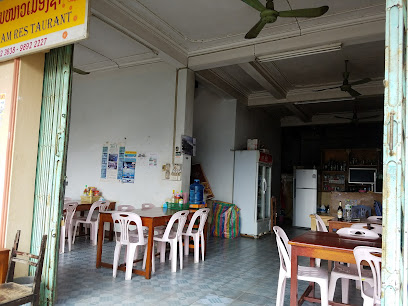
Pizza Aloha
Savor the taste of freshly made pizzas in the heart of Sam Nuea, where local flavors meet classic recipes for an unforgettable dining experience.
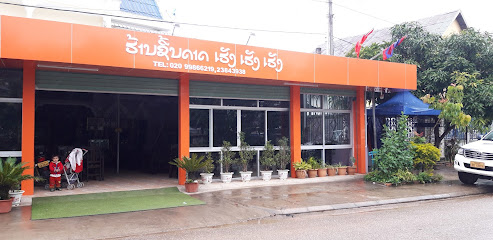
Just dance
Discover the vibrant nightlife at Just Dance Bar in Sam Nuea, where drinks flow and the dance floor awaits.

Mrs. Sengaloun Restaurant
Discover the authentic taste of Laos at Mrs. Sengaloun Restaurant, where traditional flavors and warm hospitality meet in Viang Xai.
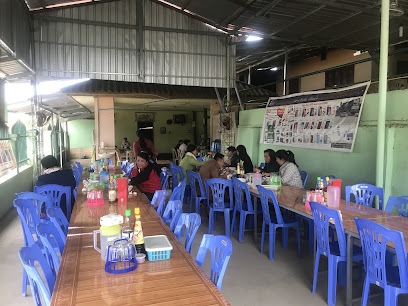
Sanesabai Restaurant
Experience the authentic taste of Laos at Sanesabai Restaurant in Sam Nuea, where local flavors and warm hospitality await every visitor.
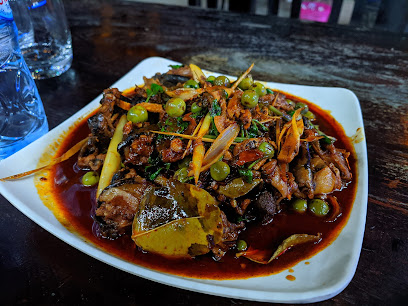
ສະບາເບຍ Sabarbeer
Dive into the lively atmosphere of Sabarbeer in Sam Nuea, where local drinks and friendly conversations await you in this popular bar.

ສະບາຍດີຊາບູ
Discover the lively atmosphere of ສະບາຍດີຊາບູ, a bar in Ban Pho Hièou that offers refreshing drinks and a taste of local culture.
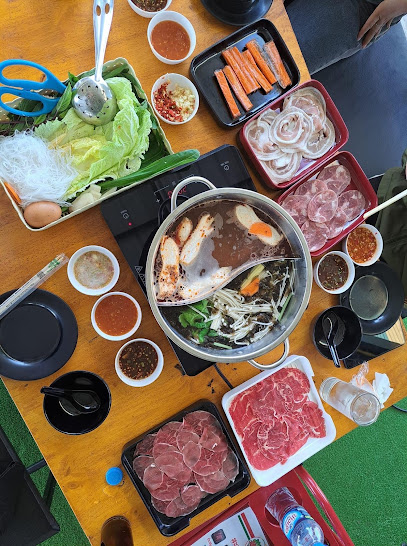
Toun coffee
Explore the delightful flavors of Laos at Toun Coffee, a quaint café in Ban Ta Ao known for its cozy ambiance and exceptional brews.

ຮ້ານ ປີ້ງແບ້4ແຍກໄຟແດງ
Experience the essence of Laotian cuisine at ຮ້ານ ປີ້ງແບ້4ແຍກໄຟແດງ, where tradition meets flavor in Sam Nuea.

หนองหลวง
Experience the charm of Laos at หนองหลวง, a cozy bar in Ban Pho Hièou offering local flavors and a welcoming atmosphere.

Shop Adian
Discover authentic Laotian cuisine at Shop Adian in Muang Sam Tai, where every dish tells a story of local culture and flavor.

ຮ້ານອາຫານປະກາຍເພັດ1
Discover the lively bar scene at ຮ້ານອາຫານປະກາຍເພັດ1, where local culture meets vibrant nightlife in Ban Pho Hièou.

Phouangmany Beer Hall
Discover the lively Phouangmany Beer Hall in Viang Xai, where local brews and vibrant atmosphere come together for an unforgettable experience.
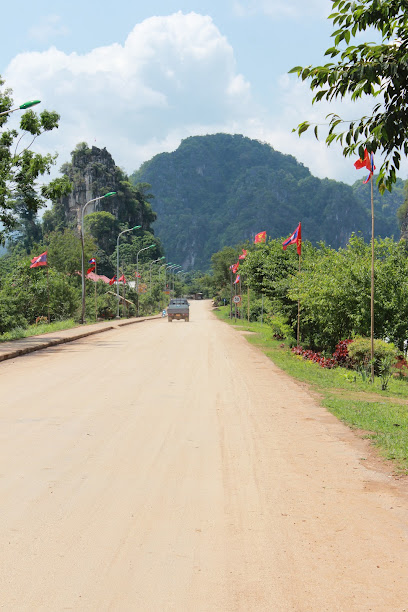
Talo’90
Experience the vibrant nightlife of Ban Pho Hièou at Talo’90, where great drinks and lively atmosphere await every visitor.

Local Phrases about Houaphanh Province
-
- Helloສະບາຍດີ
[sa baai dee] - Goodbyeຜาາຂຽວ
[pa kao] - Yesໂດ
[do] - Noບໍ່ເສຍ
[bo sai] - Please/You're welcomeກະລຸນາ
[ka luna] - Thank youຂອບໃຈ
[kop jai] - Excuse me/Sorryຂ້າພົບ
[kha phop] - How are you?ເດີບໍ່?
[deu bo?] - Fine. And you?ດີ. ແລະ ທ່ານ?
[di. lae than?] - Do you speak English?ເວົ້າໃຊ້ພາສາອັງກິດບໍ່?
[wo sai phasa angkit bo?] - I don't understandຂ້າພົບ
[kha phop]
- Helloສະບາຍດີ
-
- I'd like to see the menu, pleaseຂ້າພົບເມືອງອາຫານ
[kha phop muang ahan] - I don't eat meatຂ້າພົບບໍ່ກິບເຂັ້ມ
[kha phop bo kiap khem] - Cheers!ລິງດີ!
[ling di] - I would like to pay, pleaseຂ້າພົບຄ່າຈ່າຍ
[kha phop ka chai]
- I'd like to see the menu, pleaseຂ້າພົບເມືອງອາຫານ
-
- Help!ຊ່ວຍເຫຼືອ
[suu her] - Go away!ໄດ້ຍ້ອນ
[dai nong] - Call the Police!ໂທດາຕິກາ
[tho da tikka] - Call a doctor!ໂທດາຕິກາຜົນ
[tho da tikka pon] - I'm lostຂ້າພົບຈັບຫນ່ວຍ
[kha phop chab nawi] - I'm illຂ້າພົບຈັບເຈັບ
[kha phop chab chab]
- Help!ຊ່ວຍເຫຼືອ
-
- I'd like to buy...ຂ້າພົບຊື່ຕ້ອງການ
[kha phop sue tong kan] - I'm just lookingຂ້າພົບເບິ່ງ
[kha phop beng] - How much is it?ຈຳນວນເງິນແມ່ນຫຼາຍເດືອນ?
[cham nuan kong mai na lao deun?] - That's too expensiveມາແມ່ນຫຼາຍເດືອນ
[ma mai lao deun] - Can you lower the price?ເຈົ້າສາມາດຫຼາຍເດືອນໄດ້ແນວລະ?
[jao samat lao deun dai naeo la?]
- I'd like to buy...ຂ້າພົບຊື່ຕ້ອງການ
-
- What time is it?ເກີດເວລາແມ່ນຫຼາຍ?
[keut welao mai lao?] - It's one o'clockໂມງລະບ້ຽຍ
[mong la bia] - Half past (10)ແຊງມື່ນ
[seng muen] - Morningພື້ນ
[pun] - Afternoonແລງ
[laeng] - Eveningອາມາດ
[amat] - Yesterdayເມື້ອມື້ວາ
[muang mue wa] - Todayມື້ນີ້
[mueni] - Tomorrowມື້ອື້ນ
[muenaun] - 1ໜຶງ
[ning] - 2ສອງ
[song] - 3ສາມ
[sam] - 4ສີ່
[si] - 5ເອັຽ
[ha] - 6ຫົກ
[hok] - 7ໂປ
[ho] - 8ເຈັດ
[chet] - 9ແປດ
[paed] - 10ສິບ
[sip]
- What time is it?ເກີດເວລາແມ່ນຫຼາຍ?
-
- Where's a/the...?ຢູ່ໃກ້ໃຊ້...
[yu kai sai...] - What's the address?ທີ່ຢູ່ແບບແມ່ນ?
[ti yu bai mai?] - Can you show me (on the map)?ສາມາດໃຫ້ເຂົ້າສນາມອາຫານໄດ້ບ່ອນດຽວ?
[samat hai khao sanam ahan dai bong dio?] - When's the next (bus)?ມື້ນໍ້ານັດທີ່ຢູ່ກ່ຽວ?
[muen na nat ti yu kia?] - A ticket (to ....)ເງິນບໍ່ເພື່ອ...
[kong bo peo...]
- Where's a/the...?ຢູ່ໃກ້ໃຊ້...
History of Houaphanh Province
-
Houaphanh Province is home to some of the most enigmatic archaeological sites in Laos. The region boasts a collection of ancient stone jars, similar to those found in the Plain of Jars in Xieng Khouang Province. These megalithic jars are believed to date back to the Iron Age, around 500 BCE to 500 CE. The purpose of these jars remains a mystery, but they are thought to have been used for burial practices. Local folklore and legends add to the mystique, suggesting that the jars were used to brew rice wine for giants.
-
In the 14th century, Houaphanh was part of the Kingdom of Muang Phuan, a significant political and cultural entity in what is now northern Laos. The kingdom was known for its advanced agricultural techniques and its role in regional trade. Muang Phuan maintained a degree of autonomy despite pressures from neighboring kingdoms and the expanding influence of Lan Xang, the Lao kingdom established by Fa Ngum. The region's history during this period is marked by both conflict and collaboration with surrounding powers.
-
Houaphanh Province came under French colonial rule in the late 19th century as part of French Indochina. The French influence brought about changes in administration, infrastructure, and education. The province was a significant site during the Franco-Siamese War of 1893, which resulted in the establishment of Laos as a French protectorate. The French constructed roads and introduced new agricultural practices, but their rule also led to resistance and uprisings among the local population.
-
During the Vietnam War, Houaphanh Province was a crucial stronghold for the Pathet Lao, the communist political movement in Laos. The area was heavily bombed by U.S. forces in what is known as the 'Secret War,' as the U.S. aimed to disrupt the Ho Chi Minh Trail, which passed through the province. Vieng Xai, a town in Houaphanh, became the de facto headquarters of the Pathet Lao. The town's extensive cave systems served as shelters and command centers for the movement's leaders. Today, these caves are a poignant reminder of the province's turbulent history and are a major attraction for visitors.
-
After the end of the Vietnam War and the establishment of the Lao People’s Democratic Republic in 1975, Houaphanh Province underwent significant reconstruction efforts. The new government focused on rebuilding infrastructure, promoting education, and improving healthcare. The province, once isolated due to the war, started to open up to tourists, eager to explore its rich history and natural beauty. Development projects aimed at sustainable agriculture and eco-tourism began to take root, helping to lift the region's economy.
Houaphanh Province Essentials
-
Houaphanh Province is located in the northeastern part of Laos. The nearest international airport is Wattay International Airport in Vientiane, approximately 600 kilometers away. From Vientiane, you have several options: you can take a domestic flight to Xam Neua, the provincial capital; however, flights are limited and may not operate daily. Alternatively, you can travel by bus or minivan from Vientiane, which takes around 12-14 hours. Another option is to rent a car and drive, but be prepared for challenging road conditions, especially during the rainy season.
-
Within Houaphanh Province, transportation options include local buses, songthaews (shared pickup trucks with benches), and tuk-tuks. For shorter distances, renting a motorbike or bicycle can be a convenient way to explore the area. Taxis are rare, so it's best to arrange transportation in advance if you're planning to visit more remote sites. Be mindful that road conditions can be rough, particularly in rural areas.
-
The official currency of Laos is the Lao Kip (LAK). While some hotels and larger establishments may accept credit cards, it's advisable to carry cash, especially in smaller towns and rural areas. ATMs are available in Xam Neua, but may not be reliable in more remote parts of the province. It's wise to bring sufficient cash for your stay. US dollars and Thai baht are sometimes accepted, but it's best to have local currency for transactions.
-
Houaphanh Province is generally safe for tourists, but standard travel precautions should be taken. Avoid walking alone at night in unfamiliar areas and be cautious of your surroundings. Crime rates are low, but petty theft can occur, so keep your belongings secure. There are no specific high-crime areas targeting tourists, but it's always best to stay vigilant. Be cautious when traveling on rural roads, especially during the rainy season, as landslides and road washouts can occur.
-
In case of emergency, dial 1191 for police assistance or 1195 for medical emergencies. The main hospital is located in Xam Neua, and there are smaller medical facilities in other towns. It is strongly recommended to have travel insurance that covers medical emergencies. Pharmacies are available in larger towns, but the selection of medications may be limited, so bring any necessary prescriptions with you.
-
Fashion: Do dress modestly, especially when visiting religious sites. Avoid wearing revealing clothing. Religion: Do respect local customs and traditions, and remove your shoes when entering temples and homes. Public Transport: Do be respectful and patient; transport may not run on a strict schedule. Don't eat or drink on public transport. Greetings: Do greet people with a slight bow or a 'nop' (hands pressed together in a prayer-like gesture). Eating & Drinking: Do try local delicacies and accept food offerings graciously. Don't refuse hospitality, as it is considered impolite.
-
To experience Houaphanh Province like a local, visit the local markets to buy fresh produce and traditional Lao goods. Engage with the locals, who are often friendly and willing to share stories about their culture and history. Don't miss visiting the Viengxay Caves, which served as a base for the Pathet Lao during the Vietnam War. For a unique experience, participate in a traditional Baci ceremony, which is a significant cultural ritual in Laos.
Nearby Cities to Houaphanh Province
-
Things To Do in Phonsavan
-
Things To Do in Hanoi
-
Things To Do in Luang Prabang
-
Things To Do in Sapa
-
Things To Do in Vang Vieng
-
Things To Do in Vientiane
-
Things To Do in Ha Long
-
Things To Do in Muang Sing
-
Things To Do in Thakhek
-
Things To Do in Udon Thani
-
Things To Do in Nan
-
Things To Do in Loei
-
Things To Do in Savannakhet
-
Things To Do in Chiang Rai
-
Things To Do in Chiang Mai






